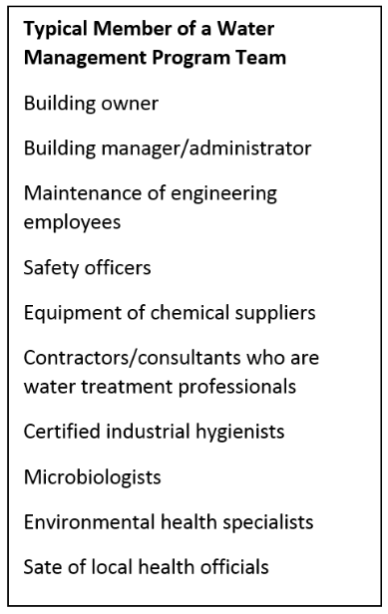HOSPITALS AND HEALTHCARE FACILITIES
Healthcare facilities pose a special situation for managing Legionella risk due to the increased number of people who may be susceptible to infection, such as the elderly, and those with weak immune systems, as well as the complexity of their plumbing, heating and cooling systems. For this reason, it is important for health care facility managers of hospitals and health care facilities to follow guidance of the Centers for Disease Control (CDC) Toolkit. The criteria for when a water management plan is needed is similar to that for large Industrial/Commercial buildings, but includes the added consideration of the health status of the people present.
In June, 2017, the Centers for Medicare & Medicaid Services (CMS) of the US Department of Health & Human Services directed all Medicare certified healthcare facilities to have water management policies and procedures to reduce the risk of growth and spread of Legionella and other microbes (microscopic organisms) in building water systems. CMS pointed to the ASHRAE and CDC guidelines and noted that “facilities unable to demonstrate measures to minimize the risk of Legionnaires disease are at risk of citation for non-compliance.”

According to CDC, a water management plan is recommended when:
- The building is a healthcare facility where patients stay overnight or where people are treated who have chronic or acute medical problems or weakened immune systems or uses special equipment such as bronchoscopes, flexible hoses, eyewash stations, birthing pools, etc.
- The building primarily houses people older than 65 years
- The building has a centralized hot water system
- The building has more than 10 stories
- The building has a cooling tower
- The building has a hot tub, Jacuzzi, or a spa that is not drained between each use
- The building has a decorative fountain
- The building has a centrally-installed mister, atomizer, air washer, or humidifier
Even if a health care facility does not contain any of the above elements, a water management plan should be developed.
In addition to the water management team that might be established for a large Industrial/Commercial building, the health care facility should also include
- Someone who understands the accreditation standards and licensing requirements for health care facilities
- Someone with expertise in infection prevention
- A clinician with expertise in infectious diseases
- Risk and quality management staff
It may be necessary to hire outside professionals with Legionella experience to have all the needed backgrounds.
It will be necessary to gather schematics of the building’s water flow diagrams to identify all areas where Legionella can grow and be transmitted, so that control measures and corrective actions can then be taken and monitoring measures can be done. Once control measures are established and running, it is important that all activities of the water management plan are documented to make sure all effective actions are being taken to safeguard the water system. Here are some additional documents that can aid the process of developing the water management plan.
CDC Toolkit https://www.cdc.gov/legionella/maintenance/wmp-toolkit.html
Fact Sheet for Clinicians https://www.cdc.gov/Legionella/downloads/fs-Legionella-clinicians.pdf
Sample Procedures and Sites https://www.cdc.gov/Legionella/downloads/cdc-sampling-procedure.pdf
Sample Data Sheet https://www.cdc.gov/Legionella/downloads/sample-data-sheet.pdf
Environmental Assessment Forms Legionella/downloads/Legionella-environmental-assessment.pdf
Response to Action Levels https://www.health.ny.gov/diseases/communicable/legionellosis/docs/2015_nursing_home_guidance.pdf
Disinfection and Control Procedures https://www.epa.gov/sites/production/files/2016-09/documents/Legionella_document_master_september_2016_final.pdf

This information is provided for the sole purpose of providing our customers with currently available information regarding actions to minimize exposure to Legionella. The information provided on this site is based on publicly-available data and American Water does not guarantee the accuracy of this information on this site or of the information provided on the third party sites linked within. This information, or reference to any devices or services is not intended for any commercial, legal or other use. The materials and information contained in this site are provided “as is” and without warranty of any kind.
